The Ultimate Web3 Marketing Guide
From the explosion of bitcoin to virtual reality, non fungible tokens (NFTs) and the metaverse, it seems that the entire world is shifting to another universe called Web 3.0.
The world wide web isn’t what we know of it anymore and Web 3.0 is proof of it. It paves the path for a revolutionary way of doing business.
In this article, we’ll dive into key marketing tips for Web 3.0 businesses as well as discuss how marketing will play a role in this new avenue.
Let’s first have a quick overview of the internet’s transition.
Web 1.0 vs. Web 2.0 vs. Web 3.0
Web 1.0

In the early years of web 1.0, internet users only had access to static websites that provided information regarding the queries they would search about. That was mostly the extent of what web 1.0 was used for and was not interactive at all. Users were simply on a quest to find answers on the internet and nothing more, then they were presented with very basic content that gave the necessary information they were looking for.
This was a very different time than what we see today with web 2.0, where internet users are able to interact with websites in a much more dynamic way.
Web 2.0

In 2004, Web 2.0 definitely ushered in a new era of internet usage.
Centralised platforms like Google, Apple and Facebook, all rose in popularity. Machine learning, targeted advertising, data analytics and data extraction from users became the standard.
While data collection is now commonplace for advertising, it often draws backlash and negativity from a vast majority of web users. Some people are concerned with privacy, while others are worried about how these centralised platforms profit from the collection of users’ data.
Despite these concerns, the majority of the world continues to use websites and social media. However, with new advances on the horizon, we may see a change in how people use the internet. More notably, making use of blockchain technology as a solution to these concerns.
Web 3.0
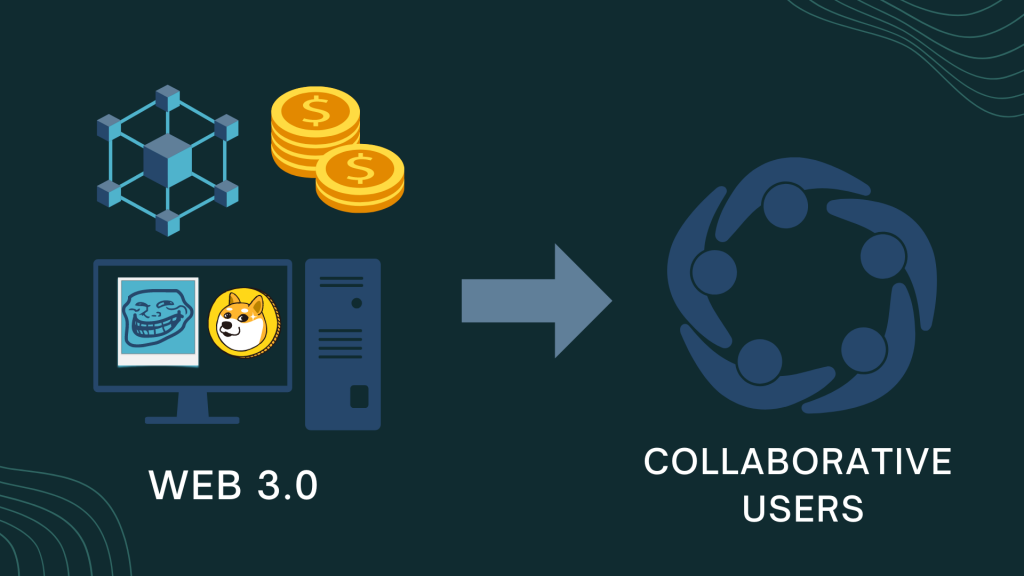
As more individuals are transitioning away from Web 2.0, Web 3.0 (also known as the semantic web) has been hailed as the next step in the evolution of the internet, offering a decentralised platform. It’s truly a fascinating world with no server failure and smart contracts in place.
On a deeper scale, this decentralised universe is based on blockchain technology and provides a number of advantages over the previous versions of the world wide web. Transactions can take place without the need for third-party involvement, and users are in control of their own data.
More than the freedom from third-party involvement, Web 3.0 allows for a more democratic space (or a fairer internet), where users are rewarded for their contributions.
The semantic web opens up new opportunities for creators, product managers, developers and other players who are all likely to play a significant role in the future of our online society.
In the context of users’ information, access to this gold mine of data is not free. The idea is, you own your data and so you have all the freedom to sell your information to advertisers in exchange for tokens.
In addition to that, users will be incentivised for every action that will help maintain the system as well as build it. These activities include creating content, testing, helping in the creation of protocols etc. For instance, if in the past user generated content was free, in the realm of the semantic web, you need to reward users or existing token holders for sharing content.
With Web 3.0, we are definitely seeing a big shift away from centralised platforms and moving towards more decentralised systems. Because users will have more control over their data and how it is used, it could also lead to new methods of advertising and monetisation.
It is still too early to say for certain what Web 3.0 will bring, but it is clear that the internet is evolving. Whether or not centralised platforms will stay, despite the rise of Web 3.0, remains undetermined. However, it is likely that decentralised systems will play a larger role in the years to come. So most businesses should more or less consider how they will approach the semantic web.
Now that we’re all on board with how web 3.0 is, let’s take these foundational principles of web 3.0 and maximise them through the perspective of marketing.
Understanding How Marketing Plays a Role in Web 3.0
Firstly, marketers need to be aware of the changes in how users interact with websites and must be well versed in how digital marketing tactics are put into place in Web 2.0, in order to be successful in web 3.0.
We previously mentioned that in Web 3.0, users will want to be rewarded for their contributions and any other activities they execute. And you should put this at the forefront of your marketing plan.
More so, users will expect to have the liberty to voice out their concerns and thoughts about your product. With this, they should be involved in the decision-making process when it comes to the discussion about the company’s overall growth.
It is worth noting that, although users may be heavily involved, you don’t necessarily need to have a product in the beginning. As the focus will fall into building a strong community first, based on your company’s purpose and what your company can solve. It should be a collaborative effort, a shared process by all – from founders to users and stakeholders.
In the next section, we will discuss some tips on how to market in the semantic web.
Web 3.0 Marketing Tips
We’ve listed several digital marketing efforts that have been used in Web 2. But we’ve tweaked them to fit Web3 marketing.
Establish Strong Community Engagement
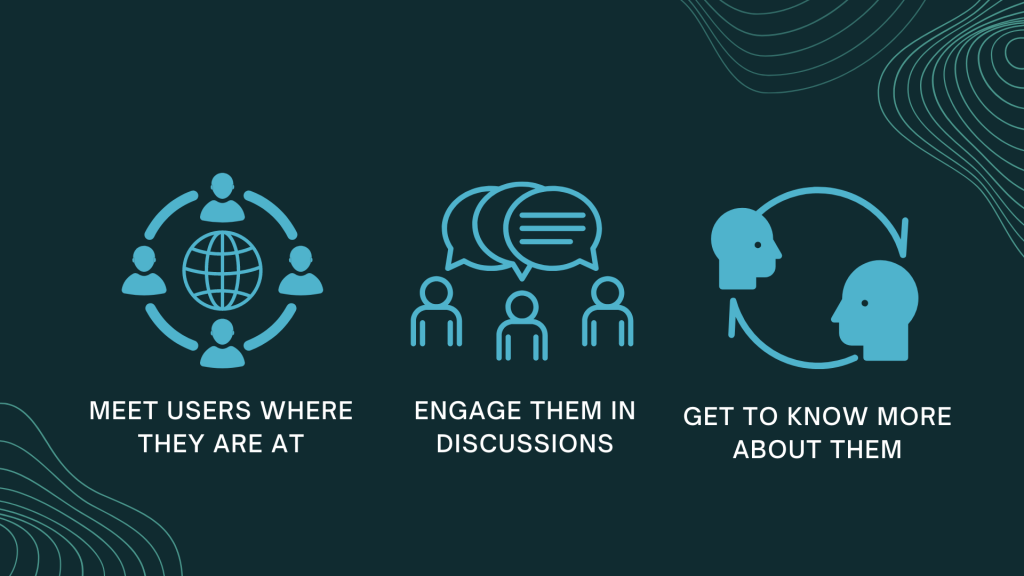
Developing a strong community is one of the most important things you can do to market your product on Web 3.0 or on the semantic web.
Though data analytics is important for understanding your users, it’s more pressing to meet them where they are at in order to ensure that they feel involved and seen. It’s also a great way to know more about your users without taking a centralised approach.
By engaging them in discussions, you create a sense of involvement and community. This will make them more likely to stick around, learn more about your product, and even become advocates for your product.
Listen to Your Community’s Ideas
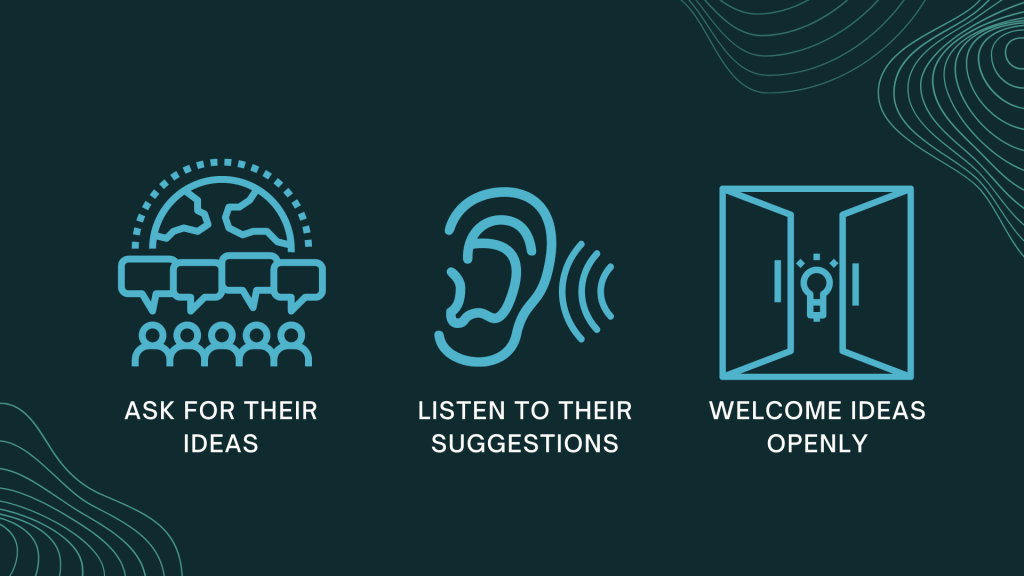
In addition to making your users feel seen, you can give them a real and authentic chance to contribute their ideas to your product. Not just for the sake that you have to do so.
It can be as simple as letting them provide suggestions for minimal changes that your business plans to implement.
Incentivise Your Community
Incentivising token holders and newcomers is a great way to market on Web 3.0.
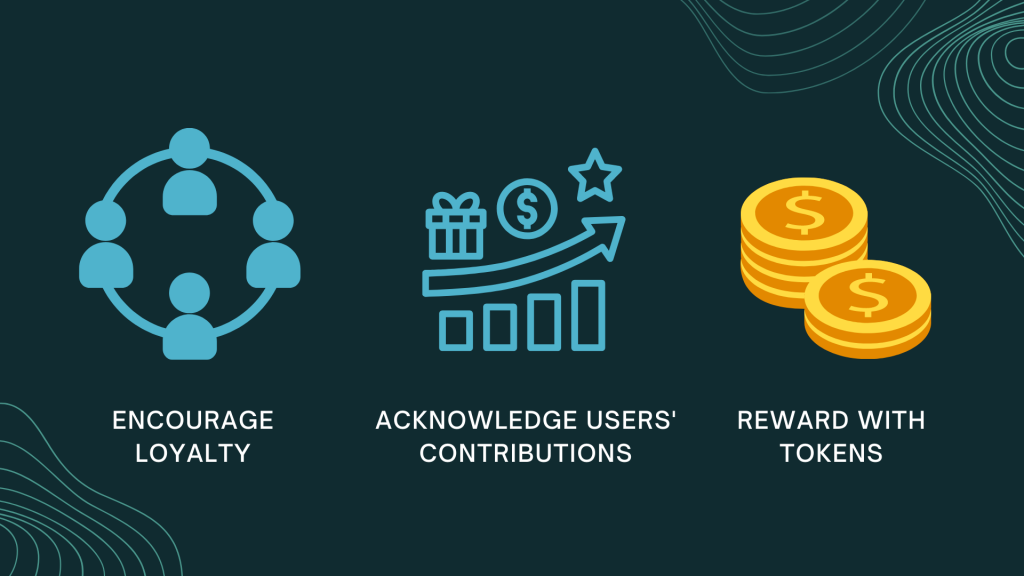
By rewarding them with tokens, you can encourage them to be more loyal members, contribute to the growth of the company, or even just stay engaged with your platform. This helps increase loyalty and drive positive word-of-mouth among your customer base. You can also incentivise referral activities.
Highlight Your Purpose

When it comes to web 3.0 marketing efforts, one of the most important things you can do is to make sure that your audience knows why you exist. After all, if they don’t understand: what you are doing, as well as how they can be a part of your mission, they’re not going to be very interested in what you have to offer.
Luckily, there are plenty of ways to do this.
One of the best ways to highlight your purpose is by writing about it on your website or blog. Through this, you are able to show your audience what you’re all about, and it can also help to attract new visitors. In addition, you can also use social media to share information about your site or project. This can help to get the word out there and attract new customers.
Utilise Content Marketing

Create High-quality Content
Consistently publishing content is great, but quality content is key to any successful marketing strategy, and this is especially true in Web 3.0. By creating valuable content that engages your target audience, you can attract attention and drive traffic to your product.
Create Valuable Content
One of the best ways to market your product is by creating valuable content. This could be in the form of informative blog posts, whitepapers, or even video content.
By creating valuable content, you are providing your audience with information that is relevant to them. This will help you to establish yourself as an authority in your field and attract more visitors to your website or product.
For example, you can write a guide about the best practices when using your web3 wallet. You can also post video content that educates or informs your target audience about what you do.
Establish and Refine Your SEO Tactics
Optimising for Search Engines

In order to reach the right people, it is important to optimise your content for search engines. Make sure you use the right keywords and phrases in your titles, descriptions, and throughout your content.
Add informative articles that answer the usual queries of your target customers. This will help people who are looking for information to find you and learn more about your product.
Develop a Strong Social Media Presence Through Social Media Marketing

Another great way to market your product is by developing a strong social media presence. This could involve creating your company’s profiles on various social media platforms and sharing content that is relevant to your audience. By doing this, you will not only be able to reach more people, but you will also be able to build relationships with them. This can help to create a loyal following of supporters who are eager to learn more about your product.
Establish a Website That Provides More Than Surface Level Information
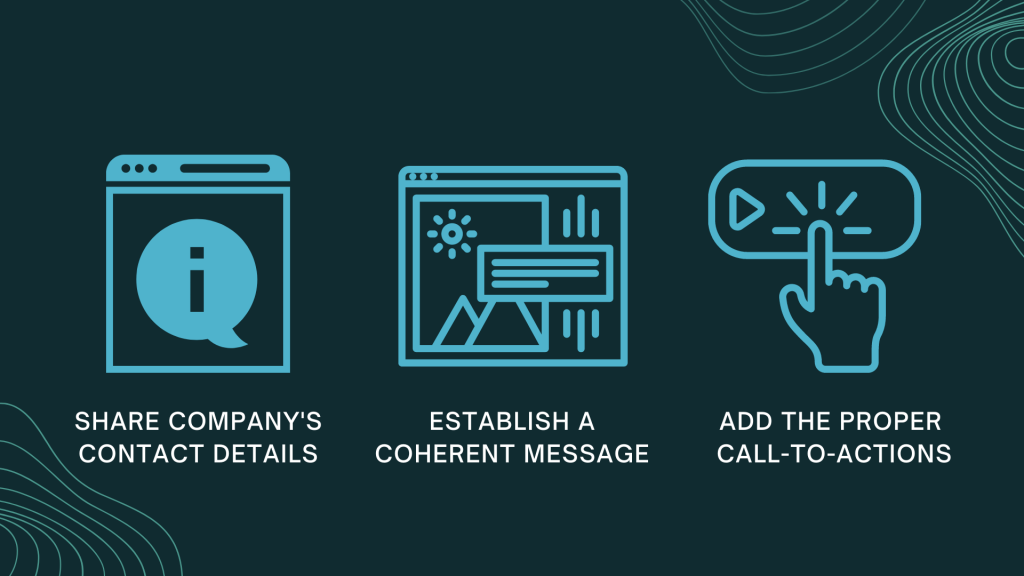
Another part of your marketing strategy should include your website. Don’t just include the brief history of how your brand came to be or a mission vision section.
Go beyond such information.
Be sure that all your contact and follow-up information is displayed on every page of your website. This will make it easy for potential customers to connect with you, especially if they have any questions in mind.
A well-planned company website should leave a “coherent message” across all pages that clearly identify the company’s purpose. Your website design and layout should be geared to help your ideal customer purchase what you are selling. Navigation menus and buttons should be easy to find, use and understand. Each page must have an inviting call to action to get website visitors to take action.
Your website should show your target audience how to purchase what you offer.
Finally, make sure that you are always available to answer questions from your audience. This can help to build trust and encourage them to get involved in what you’re doing.
Not everyone might convert into a customer. But providing a great website leaves an impression on them which could lead those individuals to consider and remember your brand.
Get Creative!

There are many ways to market online these days so don’t be afraid to try new tactics. If you can think of a way to reach your target audience, there’s a good chance that it might work.
Web 3.0 is the future, the next generation of the internet. So be creative and experiment with different methods until you find what works best for you.
Another great way to market your product is by holding events or meetups. This allows your brand to connect with your audience face-to-face and give them a chance to learn more about what you’re doing. Plus, it can be a lot of fun!
Conclusion
Web 3.0 and blockchain technology are gaining visibility, new technologies are on the rise, and virtual reality is making waves across global borders. The entire process of advancement is revolutionizing the world wide web.
Traditional marketing is long gone. Needless to say, marketing your product can be a challenge, but it is important to remember that there are many ways to reach your target audience.
We hope that you’ll find these useful and that they help you to connect with your customers in a more meaningful way. By creating high-quality content, incentivising customers, using social media marketing, engaging with your community and allowing them to contribute to the success of your product, you can attract attention to your business.
Lastly, never forget your purpose – make sure that your marketing aligns with what you stand for as a brand.
If you need help putting any of this into action, or would simply like some advice on where to start, don’t hesitate to contact us.
We love helping businesses grow and would be more than happy to chat with you about how we can make that happen. Thanks for reading!

